
Frontiers in Signal Processing
Scope & Guideline
Empowering Innovation in Signal Processing
Introduction
Aims and Scopes
- Signal Processing Algorithms and Techniques:
Research that delves into novel algorithms for processing signals, including deep learning approaches, adaptive filtering, and efficient computation methods. - Multimodal Signal Processing:
Work that integrates different types of signals (e.g., audio, video, physiological) to enhance understanding and improve applications such as health monitoring and multimedia processing. - Applications in Healthcare and Biomedical Engineering:
Studies that apply signal processing techniques to medical data, including ECG, EEG, and other physiological signals for diagnostics and monitoring. - Emerging Technologies and Systems:
Research focused on new technologies such as Internet of Things (IoT), machine learning, and artificial intelligence in the context of signal processing. - Audio and Speech Processing:
Exploration of methods for improving audio quality, speech recognition, and speaker localization, utilizing advanced signal processing techniques. - Image and Video Processing:
Innovations in processing visual data for applications like video compression, quality assessment, and image analysis.
Trending and Emerging
- Deep Learning Applications in Signal Processing:
There is a significant increase in the use of deep learning techniques for various signal processing tasks, including audio enhancement and image segmentation, indicating a shift towards data-driven methodologies. - Synthetic Data Generation:
Research focusing on the generation of synthetic data for training machine learning models is trending, particularly in areas like audio recognition and image processing, highlighting the importance of diverse datasets. - Wearable and Ubiquitous Technologies:
The integration of signal processing with wearable devices is becoming a key theme, particularly for health monitoring and real-time data analysis, reflecting the growing interest in personal health technologies. - Bayesian and Nonparametric Methods:
Emerging interest in Bayesian approaches for time series analysis and signal classification indicates a trend towards more flexible modeling techniques that can handle uncertainty effectively. - Augmented and Virtual Reality Applications:
Research related to signal processing for immersive technologies is on the rise, particularly in enhancing user experience in XR (Extended Reality) environments.
Declining or Waning
- Traditional Signal Processing Techniques:
Research that focuses on classical methods, such as Fourier transforms and basic filtering techniques, seems to be declining as newer machine learning-based approaches gain popularity. - Basic Image Processing Techniques:
There is a noticeable reduction in publications that cover fundamental image processing methods, possibly overshadowed by more complex deep learning applications. - Synchronous Signal Processing:
Studies that rely on synchronous processing methods are appearing less frequently, suggesting a shift towards asynchronous and real-time processing methods in line with current technological advancements.
Similar Journals
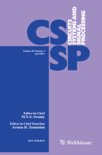
CIRCUITS SYSTEMS AND SIGNAL PROCESSING
Unveiling Trends and Technologies in Signal ProcessingCIRCUITS, SYSTEMS AND SIGNAL PROCESSING, published by Springer Birkhauser, is a highly regarded journal in the fields of applied mathematics and signal processing, boasting an impact factor that reflects its robust academic contributions. Established in 1982, this journal aims to disseminate cutting-edge research that bridges the gap between theoretical advancements and practical applications in circuit design, systems theory, and signal processing. With a Thomason Scopus ranking of Q2 in Applied Mathematics and Q3 in Signal Processing, it stands out as a leading resource for researchers, professionals, and students seeking to enhance their knowledge and innovate within these disciplines. The journal provides insight into the latest trends and technologies, making it an essential reading for those engaged in the development of signal processing methodologies. Although it does not offer Open Access options, it remains a critical repository of knowledge with deep relevance in today's tech-driven landscape.
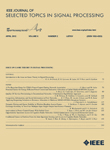
IEEE Journal of Selected Topics in Signal Processing
Exploring Innovative Pathways in Electrical EngineeringIEEE Journal of Selected Topics in Signal Processing is a premier academic publication dedicated to the advancement of knowledge in the field of signal processing. Published by IEEE-INST ELECTRICAL ELECTRONICS ENGINEERS INC, the journal boasts an impressive impact factor that places it in the top tier of its category; ranked Q1 in both Electrical and Electronic Engineering and Signal Processing for 2023. Given its esteemed standing, the journal serves as a vital resource for researchers, professionals, and students alike, providing cutting-edge insights and developments that shape the future of signal processing. The journal encompasses a wide array of topics relevant to the evolving landscapes of electrical engineering and computer science, with particular significance in innovative applications and methodologies. As a platform for disseminating high-quality research, this journal remains essential for those seeking to stay at the forefront of this dynamic field. You can explore the latest contributions and findings, benefiting from the journal's influential status in the realm of signal processing.

Journal of Electrical and Computer Engineering
Connecting Ideas, Inspiring Solutions in EngineeringJournal of Electrical and Computer Engineering is a premier open-access journal published by HINDAWI LTD, dedicated to advancing the fields of electrical and computer engineering. With an ISSN of 2090-0147 and an E-ISSN of 2090-0155, this journal has been providing a platform for cutting-edge research since its inception in 2007. Based in the United States, it operates from its address at ADAM HOUSE, 3RD FLR, 1 FITZROY SQ, LONDON W1T 5HF, ENGLAND. The journal has established itself with a healthy impact factor, classified in the 2023 Q2 quartile for both Computer Science (Miscellaneous) and Electrical and Electronic Engineering, demonstrating its growing influence in the academic community. Additionally, its ranking positions it within the 67th percentile in General Computer Science and the 61st percentile in Electrical and Electronic Engineering on Scopus, indicating its significant contribution to these fields. Covering an extensive scope from 2010 to 2024, the journal seeks to publish innovative research articles, reviews, and case studies that explore new techniques and applications in electrical and computer engineering, benefiting a wide audience of researchers, professionals, and students focused on these rapidly-evolving areas.

Signal Image and Video Processing
Innovating Imaging and Video TechnologiesSignal Image and Video Processing, published by Springer London Ltd, is a cutting-edge academic journal dedicated to the fields of electrical and electronic engineering and signal processing. With an ISSN of 1863-1703 and an E-ISSN of 1863-1711, this journal plays a pivotal role in disseminating innovative research findings from 2007 to 2024, boasting a commendable Q2 ranking in its respective categories. Located in the United Kingdom, the journal attracts a diverse readership of researchers, professionals, and students eager to explore advancements in signal processing technologies and their applications in imaging and video analysis. Although it does not offer open access, its rigorous peer-review process ensures the publication of high-quality, impactful research, evident by its respectable rankings within Scopus in both electrical engineering and computer science domains. The journal serves as vital resource for those aiming to stay at the forefront of technological developments and research in image and video processing.
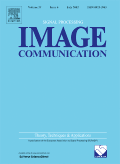
SIGNAL PROCESSING-IMAGE COMMUNICATION
Innovating Signal Processing for Tomorrow's TechnologiesSIGNAL PROCESSING-IMAGE COMMUNICATION, published by Elsevier, is a leading journal in the fields of Computer Vision, Signal Processing, and Electrical Engineering. With an impressive range of Quartile rankings in 2023, including Q1 in Electrical and Electronic Engineering and Q2 in Signal Processing, this journal is vital for researchers and professionals seeking the latest advancements and comprehensive studies in image communication technologies. Issued in the Netherlands, SIGNAL PROCESSING-IMAGE COMMUNICATION has been an essential resource since its inception in 1989, fostering innovation and collaboration among academia and industry. The journal provides a platform for high-quality peer-reviewed research, addressing significant challenges and solutions in the convergence of image processing and communication. Although currently not an Open Access journal, it offers subscription options that ensure a broad dissemination of groundbreaking knowledge. With a robust reputation reflected in its Scopus ranks, this journal serves as an indispensable reference for students and experts aiming to stay at the forefront of developments in this dynamic field.
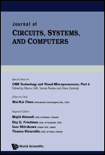
JOURNAL OF CIRCUITS SYSTEMS AND COMPUTERS
Pioneering Insights in Circuit Systems and Computer TechnologiesJOURNAL OF CIRCUITS SYSTEMS AND COMPUTERS is a pivotal publication in the fields of Electrical and Electronic Engineering as well as Hardware and Architecture, published by World Scientific Publishing Co. Pte Ltd in Singapore. With an ISSN of 0218-1266 and an E-ISSN of 1793-6454, this journal has contributed significantly to the discourse surrounding innovative research and technological advancements since its inception in the late 1990s. It currently holds a Q3 ranking in both relevant categories, reflecting its competitive stature and providing researchers, professionals, and students a substantial platform for disseminating findings. The journal covers a diverse range of topics, focusing on the design, analysis, and application of circuits, systems, and advanced computing technologies. Authors benefit from a rigorous peer-review process, ensuring high-quality publications that drive the field forward. The journal's commitment to excellence underscores its importance in fostering academic collaboration and knowledge exchange, making it a vital resource for anyone dedicated to advancing the domains of electrical engineering and computer science.

Journal of Electronics & Information Technology
Driving Knowledge Forward in Electrical EngineeringJournal of Electronics & Information Technology, published by the prestigious Chinese Academy of Sciences, Institute of Electronics, stands as a vital resource in the field of Electrical and Electronic Engineering. With an ISSN of 1009-5896, this journal has been dedicated to the dissemination of advanced research and innovative applications since its inception in 2001. It holds a competitive position within its category, ranked Q3 in the 2023 Scopus database, reflecting its contribution to the scientific community. The journal addresses a wide array of topics related to electronics and information technology, making it indispensable for researchers, professionals, and students aiming to stay at the forefront of technological advancements. Although it operates under a traditional model of access, its cumulative output remains pivotal for knowledge sharing and innovation in the rapidly evolving landscape of electronic engineering. With its commitment to excellence, the Journal of Electronics & Information Technology aims to foster a thriving academic environment and promote impactful research within the discipline.

EURASIP Journal on Audio Speech and Music Processing
Bridging science and sound through rigorous research.EURASIP Journal on Audio Speech and Music Processing is a distinguished open-access journal published by Springer, focusing on the rapidly evolving fields of audio, speech, and music processing. Established in 2006, this journal has become a pivotal platform for researchers, professionals, and students interested in advancing the state-of-the-art technologies and methodologies in acoustics and electronic engineering. With an impressive impact factor and ranking—Q2 in both Acoustics and Ultrasonics and Electrical and Electronic Engineering—this journal serves as a vital resource, disseminating innovative research findings that contribute to the academic and practical realms of audio processing. The rigorous peer-review process ensures that only high-quality manuscripts are published, reinforcing the journal's credibility and importance in the field. The journal is indexed in prominent databases, making it accessible to a global audience keen on exploring the latest developments from 2007 to 2024 and beyond. For researchers looking to share their work or stay abreast of the latest advancements, EURASIP Journal on Audio Speech and Music Processing is an essential resource that champions the interplay of science and technology in audio processing.
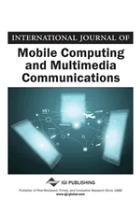
International Journal of Mobile Computing and Multimedia Communications
Unveiling Trends in Mobile Computing ExcellenceThe International Journal of Mobile Computing and Multimedia Communications, published by IGI Global, stands at the intersection of technology and connectivity, addressing the critical advancements in mobile computing and multimedia communications. With an ISSN of 1937-9412, this journal provides a platform for the dissemination of innovative research findings and insights, fostering collaboration and communication among researchers, professionals, and students within the field. Although currently indexed in the Q4 quartile for 2023 in Computer Networks and Communications, its rich archive of articles from 2009 to 2014 and 2016 to 2024 reflects the journal's ongoing commitment to exploring emerging trends, technologies, and methodologies that shape the future of mobile computing. While it is not an open-access journal, the high-quality research published here is crucial for advancing academic discourse and practical applications in an increasingly digital world. By encouraging submissions across a wide range of topics, International Journal of Mobile Computing and Multimedia Communications continues to enhance its reputation as a pivotal resource for scholars and industry experts alike.
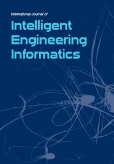
International Journal of Intelligent Engineering Informatics
Transforming Ideas into Intelligent Solutions.International Journal of Intelligent Engineering Informatics, published by INDERSCIENCE ENTERPRISES LTD, stands at the forefront of research in the interdisciplinary domains of computer science, artificial intelligence, and human-computer interaction. With an ISSN of 1758-8715 and E-ISSN of 1758-8723, this journal serves as a vital resource for researchers and professionals seeking to explore the latest advancements in intelligent engineering and informatics techniques crucial for the evolution of modern technologies. Although currently not an open-access publication, it provides a necessary platform for disseminating high-quality research; its impact factor continues to grow, attracting a diverse readership interested in signal processing, software development, and computer vision. Covering innovative topics from 2022 to 2024, the journal is committed to fostering scholarly dialogue that paves the way for emerging trends and applications in the field, ensuring its relevance and significance in today's rapidly advancing technological landscape.